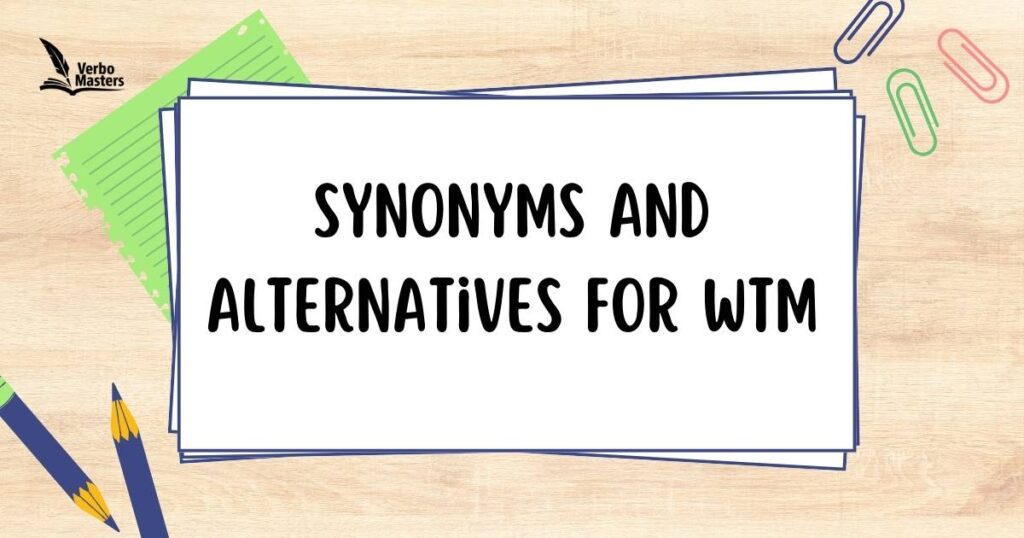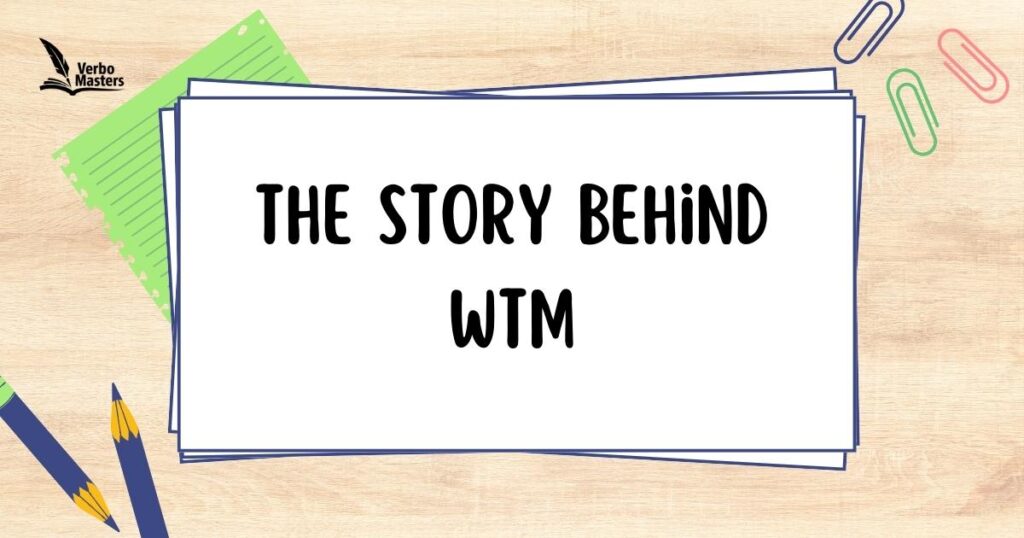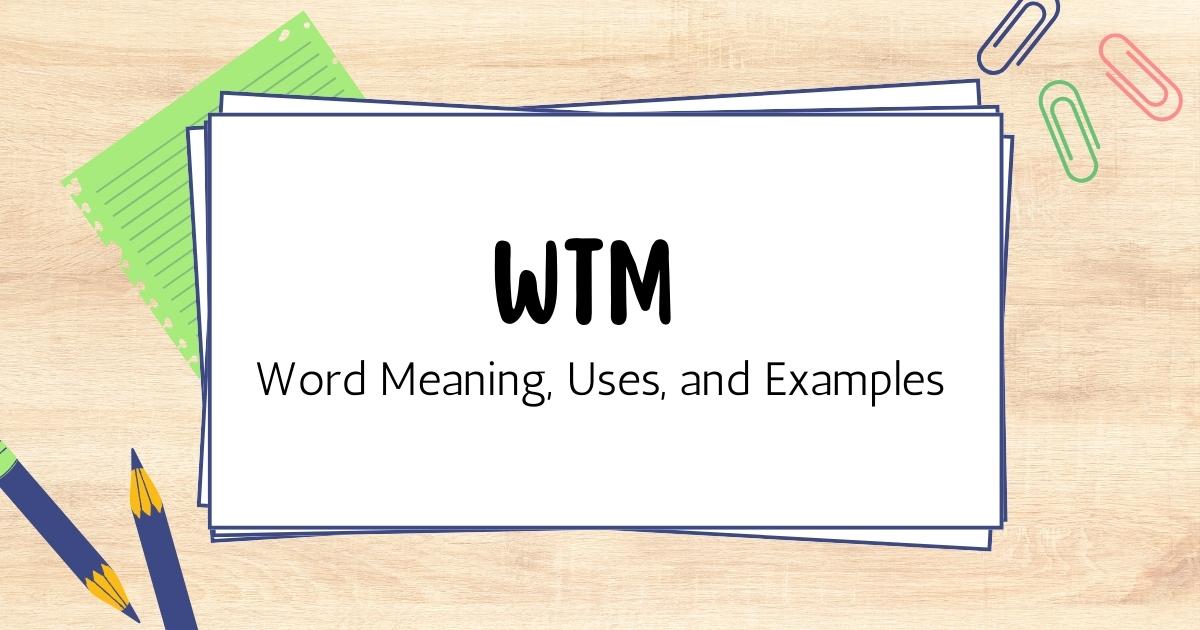WTM is a popular abbreviation used in texting and social media. It can mean different things depending on the context. Most commonly, it stands for “What’s The Move?” and is used to ask about plans. Some people also use it to mean “What’s The Matter?” when checking on someone. Understanding WTM helps you reply correctly in conversations. Knowing the right meaning depends on who you’re talking to and the situation.
Slang like WTM keeps online chats fast and fun. It’s a quick way to ask questions or show concern. Learning common abbreviations makes texting easier and more natural. Whether you’re making plans or checking in on a friend, WTM is a handy term to know!
What Does WTM Mean?
WTM is an internet slang abbreviation that stands for “What’s The Move?” or “What’s The Matter?” depending on the context. It’s commonly used in texting and on social media when making plans or checking in on someone.
The meaning of WTM depends on how and where it’s used. If someone asks, “WTM tonight?”, they are asking about plans. If they text, “You seem upset, WTM?”, they are asking what’s wrong. Knowing the situation helps determine the correct meaning.
25 Key Facts About WTM
1. WTM is short for “What’s The Move?” or “What’s The Matter?”
2. It’s mostly used in text messages and on social media.
3. The meaning depends on the conversation’s context.
4. “What’s The Move?” is used to ask about plans or events.
5. “What’s The Matter?” is used to check if someone is okay.
6. It’s a quick and informal way to start a conversation.
7. WTM is popular among teenagers and young adults.
8. It became more common with platforms like Snapchat, Instagram, and Twitter.
9. People often use WTM when making last-minute plans.
10. It helps keep messages short and easy to understand.
11. WTM is not usually used in formal writing or emails.
12. In some cases, WTM can also mean “What’s The Meaning?” but this is rare.
13. When used in group chats, WTM often means “What’s everyone doing?”
14. It’s commonly seen in casual texting between friends.
15. Sometimes, WTM is paired with emojis like 🤔 or ❓ to add clarity.
16. If someone texts “WTM” alone, they are likely waiting for a response.
17. People often respond to “WTM?” with their current plans or emotions.
18. Using WTM in professional settings may not be appropriate.
19. Some people misunderstand WTM if they are unfamiliar with slang.
20. It’s a part of internet culture and keeps evolving with language trends.
21. WTM can be used in both positive and serious conversations.
22. The phrase behind WTM has been used in spoken English for a long time.
23. Many slang words like WTM spread quickly through memes and viral content.
24. WTM is usually written in lowercase (“wtm”) in casual texting.
25. Like many internet terms, WTM may fade in popularity as new slang emerges.
Where Did WTM Come From?
The abbreviation WTM comes from everyday spoken language. People often ask, “What’s the move?” when making plans or “What’s the matter?” when checking on someone. Over time, texting culture shortened these phrases to WTM for quick communication.
The rise of social media and messaging apps helped spread WTM. It became common in casual conversations, especially among younger people. Since it’s short and easy to type, it became a go-to phrase when chatting online.
25 Facts About WTM’s Origin
1. WTM evolved from spoken language into texting slang.
2. “What’s the move?” has been used for decades to ask about plans.
3. “What’s the matter?” has been a common phrase for checking on someone.
4. WTM gained popularity as texting became more common.
5. It became widely used on social media platforms like Snapchat and Twitter.
6. The abbreviation follows the trend of shortening phrases for quick texting.
7. Young people started using it more frequently in casual conversations.
8. It spread through memes, group chats, and online culture.
9. WTM became especially popular in urban slang and internet communities.
10. It is mostly used in informal settings rather than formal communication.
11. Texting shortcuts like WTM save time and effort while chatting.
12. The meaning of WTM changed depending on the situation and conversation.
13. Social media helped turn WTM into a widely recognized abbreviation.
14. Its use grew along with other texting slang like “wyd” (what you doing).
15. It’s often used in direct messages (DMs) when making plans.
16. WTM’s popularity increased with the rise of mobile messaging apps.
17. It became common in online gaming communities and group chats.
18. Music and pop culture references also contributed to its spread.
19. Different regions and groups may use WTM in slightly different ways.
20. The phrase behind WTM has been used in English for many years.
21. Some people might not know WTM unless they frequently text or use social media.
22. It is part of a larger trend of slang evolving through digital communication.
23. Unlike older internet slang, WTM is still actively used today.
24. It continues to evolve as new slang terms emerge.
25. WTM may one day be replaced by another abbreviation, but for now, it’s widely used.
You can also read; ISTG: What It Stands For, When to Use It, and Examples in Conversation
How Do People Use WTM in Conversations?
WTM is used in texting and online conversations to ask about plans or check on someone’s well-being. Its meaning depends on how it’s used in a sentence. If someone asks, “WTM tonight?”, they want to know what’s happening. If they text, “WTM, you okay?”, they are asking if something is wrong.
People often use WTM in casual group chats, direct messages, and social media comments. It’s a quick way to start conversations, make plans, or express concern. Since it’s informal, it’s mostly used between friends or close acquaintances.
25 Common Uses of WTM
1. “WTM tonight?” – Asking about plans for the evening.
2. “You seem down, WTM?” – Checking on someone’s feelings.
3. “WTM this weekend?” – Making weekend plans.
4. “I’m bored, WTM?” – Seeing if friends are available to hang out.
5. “Bro, WTM at the party?” – Asking what’s happening at an event.
6. “WTM after work?” – Checking in about post-work plans.
7. “You good? WTM?” – Showing concern for a friend.
8. “WTM at the gym?” – Asking about workout plans.
9. “WTM with the team today?” – Checking in on group activities.
10. “Just woke up, WTM?” – Seeing what’s going on.
11. “WTM for lunch?” – Asking about lunch plans.
12. “WTM for New Year’s?” – Making holiday plans.
13. “Yo, WTM at the mall?” – Asking if something is happening at a location.
14. “He acting weird, WTM?” – Questioning someone’s behavior.
15. “WTM after class?” – Seeing if friends want to hang out.
16. “I heard something crazy, WTM?” – Asking for more details.
17. “WTM later?” – Checking on availability for plans.
18. “Can’t decide, WTM?” – Asking for advice or input.
19. “New episode out! WTM?” – Seeing if someone wants to watch together.
20. “Need to talk, WTM?” – Trying to start a serious conversation.
21. “We outside! WTM?” – Inviting someone to join in the fun.
22. “WTM for vacation?” – Discussing trip ideas.
23. “Been a long day, WTM?” – Venting to a friend.
24. “WTM with that situation?” – Asking for an update.
25. “So many choices, WTM?” – Expressing indecision.
Who Uses WTM?
WTM is mostly used by younger people who text and use social media frequently. It’s popular among teenagers and young adults who want a quick way to ask what’s going on. Whether they’re planning a night out or just checking in with friends, WTM makes conversations faster and easier.
While younger generations use it the most, WTM has also spread to older age groups who stay active online. People who use platforms like Snapchat, Instagram, and Twitter are more likely to see and use WTM in their daily chats. It’s an informal term, so it’s rarely used in professional settings.
25 Groups of People Who Use WTM
1. Teenagers texting friends about weekend plans.
2. College students coordinating study sessions.
3. Young professionals making after-work plans.
4. Social media users commenting on posts.
5. Gamers asking about online matches.
6. Partygoers checking where the fun is.
7. Group chat members planning meetups.
8. People in long-distance friendships staying connected.
9. Couples figuring out date night ideas.
10. Influencers engaging with followers.
11. Siblings making family plans.
12. Travelers coordinating itineraries.
13. Music lovers asking about concert plans.
14. Movie fans planning watch parties.
15. Gym buddies setting up workout sessions.
16. Office friends discussing happy hour.
17. People in big friend groups staying in touch.
18. Sports fans checking game schedules.
19. Bloggers interacting with audiences.
20. Twitch streamers chatting with viewers.
21. Students keeping up with classmates.
22. Online daters planning meetups.
23. Trend followers staying updated.
24. People in new cities making friends.
25. Anyone who texts and chats casually!
Examples of WTM in a Sentence
Understanding how WTM is used in conversations can make it easier to use in real life. It often depends on the situation—whether someone is asking about plans, checking in, or just chatting. Below are different ways people naturally use WTM in their messages.
WTM is flexible and can fit into all kinds of casual conversations. It can be serious when asking if someone is okay or playful when making plans. Knowing how to use it properly makes texting smoother and more fun.
25 Example Sentences Using WTM
1. “WTM tonight? Let’s do something fun!”
2. “You’ve been quiet all day, WTM?”
3. “WTM with the party? Are we still going?”
4. “I heard you got big news, WTM?”
5. “Hey, I just woke up. WTM?”
6. “WTM for dinner? I’m craving pizza!”
7. “Finals are over! WTM to celebrate?”
8. “WTM? I feel like going for a drive.”
9. “Long day at work. WTM later?”
10. “WTM for the weekend? Any plans?”
11. “Just got to the mall. WTM?”
12. “Game night at my place! WTM?”
13. “You ghosted me all day, WTM?”
14. “WTM with our trip? Still happening?”
15. “I miss you! WTM? Let’s catch up.”
16. “Everyone’s talking about that drama, WTM?”
17. “I need advice, WTM?”
18. “New episode dropped! WTM?”
19. “I’m starving! WTM for lunch?”
20. “Saw you at the gym, WTM?”
21. “I heard you got a new job! WTM?”
22. “WTM with the tickets? Did you buy them?”
23. “Let’s plan a trip! WTM?”
24. “Everyone’s going out tonight! WTM?”
25. “It’s been a while since we talked, WTM?”
Synonyms and Alternatives for WTM

WTM is just one way to ask what’s going on, but there are plenty of other phrases that mean the same thing. Some alternatives are casual and commonly used in texting, while others fit better in different situations. Knowing multiple ways to ask “What’s the move?” helps keep conversations fresh and engaging.
People often switch between different phrases based on their mood or who they’re talking to. Whether you’re texting friends, chatting online, or sending a quick message, these alternatives can make your conversations more natural and fun.
25 Synonyms and Alternatives for WTM
1. “What’s up?” – A classic way to ask what’s happening.
2. “What’s good?” – Similar to “what’s up,” but with a chill vibe.
3. “What’s happening?” – A casual way to ask for updates.
4. “What’s going on?” – Another way to check in.
5. “What’s the plan?” – Used when making plans with friends.
6. “What’s poppin’?” – A fun, slangy way to ask what’s up.
7. “What are you up to?” – A simple way to check in.
8. “What’s crackin’?” – A playful, old-school phrase.
9. “What’s the vibe?” – Asking about the mood of a plan or place.
10. “What’s the deal?” – When you want more details on something.
11. “What’s the word?” – Used when waiting for an update.
12. “Where’s everyone at?” – Great for group chats.
13. “Anything fun happening?” – A straightforward way to ask about plans.
14. “What’s new?” – A simple way to start a conversation.
15. “What’s cooking?” – A fun, lighthearted way to ask what’s up.
16. “Where’s the party?” – Perfect when looking for something fun to do.
17. “What are we doing tonight?” – Used to confirm plans.
18. “Got any plans?” – A direct way to ask what someone is up to.
19. “Who’s around?” – Checking who’s available to hang out.
20. “What’s the latest?” – Asking for updates on any situation.
21. “What’s the tea?” – A trendy way to ask for gossip or news.
22. “Fill me in!” – When you want someone to update you.
23. “What’s the situation?” – Used in more serious or fun contexts.
24. “What’s going down?” – A playful way to ask what’s happening.
25. “Where’s the fun?” – Great for asking about exciting plans.
Antonyms of WTM
While WTM is about making plans and checking in, there are also ways to express disinterest in doing anything. If someone asks WTM and you don’t feel like going out or talking, you might use phrases that mean the opposite. Some antonyms show a lack of plans, while others express boredom or being unavailable.
Knowing these opposite phrases can help you respond in different ways. Whether you’re tired, busy, or just not in the mood, these words and phrases come in handy.
25 Antonyms of WTM
1. “Nothing much.” – The most common reply to WTM.
2. “Just chilling.” – A relaxed way to say you’re not up to much.
3. “Laying low.” – Suggests you’re staying in for the night.
4. “Taking it easy.” – A way to say you’re relaxing.
5. “Not much going on.” – A direct response to WTM.
6. “Just staying in.” – When you don’t feel like going out.
7. “I’m busy.” – A way to let someone know you’re occupied.
8. “Nothing planned.” – When you have no set plans.
9. “Too tired to do anything.” – Expressing exhaustion.
10. “Just watching Netflix.” – A common response when staying home.
11. “Catching up on work.” – Used when busy with tasks.
12. “Not feeling social today.” – When you want alone time.
13. “Just scrolling on my phone.” – A casual, relatable response.
14. “Relaxing at home.” – A softer way of saying you’re not doing much.
15. “Taking a break from plans.” – When you don’t want to go out.
16. “Feeling lazy today.” – A funny way to say you’re doing nothing.
17. “Nothing exciting.” – A simple response to WTM.
18. “Going to bed early.” – When you’re done for the day.
19. “Not in the mood for anything.” – Expressing a lack of interest.
20. “I’ll pass on plans today.” – Declining an invite.
21. “Don’t feel like going out.” – A clear way to say you’re staying in.
22. “Taking a personal day.” – When you need a break.
23. “Just vibing alone.” – A casual way to say you’re chilling.
24. “Bored but not looking for plans.” – When you’re doing nothing but don’t want to do anything.
25. “Busy with life stuff.” – A general excuse to avoid plans.
The Story Behind WTM

Like many internet slang terms, WTM started as a simple abbreviation that gained popularity over time. It likely emerged from casual conversations where people wanted a quick way to ask about plans. Since texting is all about speed and convenience, shortening phrases like “What’s the move?” became common.
Social media played a big role in spreading WTM. As more people started using it in group chats, memes, and captions, it became a well-known term. Today, it’s a go-to phrase for checking in with friends and making plans without typing out a full sentence.
Fun Facts
WTM may seem like just another internet slang term, but there are some interesting facts about its usage and evolution. Here are some fun tidbits you might not know!
- WTM is most popular among Gen Z and Millennials. Older generations are less likely to use or recognize it.
- It became widely used through Snapchat and Instagram. Many people use WTM in DMs and captions.
- Different regions may interpret WTM differently. Some see it as “What’s the move?” while others think it means “What’s the matter?”
- WTM is rarely used in verbal conversations. It’s almost always typed rather than spoken.
- It’s often paired with emojis. You might see “WTM? 🤔” or “WTM tonight? 🎉” in texts.
- Celebrities and influencers have helped spread WTM. Many social media stars use it in their posts.
- It’s been used in song lyrics. Some rappers and hip-hop artists have included WTM in their music.
- It’s frequently seen in group chats. Friends use it to make quick plans without long messages.
- WTM can be flirty. Some people use it as a casual way to ask someone out.
- It’s still evolving. Like all slang, WTM may take on new meanings in the future!
FAQs
What does WTM stand for?
WTM can stand for different things, but the most common meaning is “What’s the move?” It’s often used to ask about plans or activities.
Where is WTM mostly used?
WTM is popular on social media platforms like Snapchat, Instagram, and TikTok. It’s also commonly used in text messages and group chats.
Can WTM mean something else?
Yes, depending on the context, WTM can also mean “What’s the matter?” or “Whatever that means.” The meaning changes based on how it’s used in a conversation.
Is WTM used in professional settings?
No, WTM is informal slang and is mainly used among friends. It’s not commonly seen in emails, business conversations, or formal writing.
Who typically uses WTM?
WTM is mostly used by younger people, especially Gen Z and Millennials. It’s popular in casual chats and social media posts.
How do you respond to WTM?
If someone asks “WTM?” you can reply with your plans, suggest an activity, or ask them what they want to do.
Is WTM used worldwide?
WTM is mainly used in English-speaking countries, especially in the U.S. However, internet slang spreads quickly, so people in other regions may use it too.
When did WTM become popular?
WTM started gaining popularity in the early 2010s and became more common with the rise of Snapchat and Instagram.
Can WTM be flirty?
Yes, sometimes WTM is used as a casual way to ask someone to hang out, which can have a flirty tone depending on the context.
Are there alternatives to WTM?
Yes, similar phrases include “What’s up?”, “What’s happening?”, or “Any plans?” These can be used in the same way as WTM.
Conclusion
WTM is a popular slang term that stands for “What’s the move?” People use it to ask about plans, especially when making social arrangements. It’s commonly seen in text messages, group chats, and on social media platforms.
The phrase is mostly used by younger generations, but its meaning depends on the context. Sometimes, it can also mean “What’s the matter?” when checking on someone. Either way, WTM is a quick and easy way to start a conversation.

I’m John Smith, a language enthusiast dedicated to helping writers, students, and professionals master the art of clear and effective communication. Whether you’re looking for grammar tips, writing guides, or common mistake corrections, you’ll find valuable insights to improve your language skills. Let’s make grammar simple and fun!

